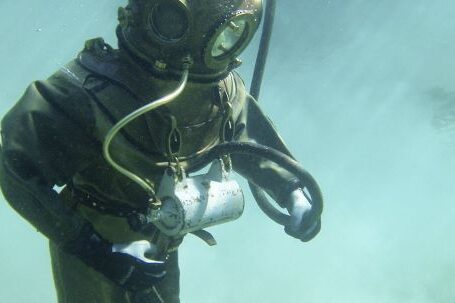Diving into the underwater world is an exhilarating and awe-inspiring experience that can open up a whole new world of adventure. Whether you are a thrill-seeker, nature lover, or simply curious about the mysteries that lie beneath the surface, exploring the underwater world is a journey worth embarking on. In this guide, we will take you through the basics of underwater exploration and provide you with essential tips to ensure a safe and enjoyable experience.
Choosing the Right Equipment
Before you dive in, it is important to have the right equipment. The most essential piece of gear is a diving mask that fits snugly and allows you to see clearly underwater. A well-fitting wetsuit or drysuit will keep you warm and protected from any potential hazards. Additionally, a pair of fins will enable you to move through the water with ease.
Getting Certified
If you are new to diving, it is crucial to get certified before exploring the underwater world. There are various diving organizations that offer certification courses, such as PADI (Professional Association of Diving Instructors) and SSI (Scuba Schools International). These courses will teach you the necessary skills and knowledge to dive safely and responsibly.
Understanding Basic Dive Techniques
Before you take the plunge, familiarize yourself with basic dive techniques. One essential skill is equalizing your ears, which involves gently blowing air through your nose to equalize the pressure in your ears as you descend. Another important technique is controlling your buoyancy, which allows you to maintain a comfortable and stable position in the water. Practice these skills in a controlled environment before venturing into open water.
Choosing the Right Dive Site
When choosing a dive site, consider your skill level and interests. Beginner-friendly dive sites often have calm waters, good visibility, and an abundance of marine life. Some popular destinations for beginners include the Great Barrier Reef in Australia, the Red Sea in Egypt, and the Maldives. Research the dive site beforehand to ensure that it meets your expectations and requirements.
Respecting Marine Life
When exploring the underwater world, it is essential to respect and protect the marine life. Avoid touching or disturbing any creatures you encounter, as this can harm them or their habitat. Take only photos and memories, leaving nothing but bubbles behind. By being a responsible diver, you can help preserve the delicate ecosystems that exist beneath the surface.
Staying Safe
Safety should always be a top priority when exploring the underwater world. Always dive with a buddy and maintain clear communication throughout the dive. Plan your dive and dive your plan, ensuring that you have enough air and time to safely ascend. Keep an eye on your depth and never exceed your limits. If you encounter any difficulties or feel uncomfortable, signal to your buddy and ascend slowly.
Continuing Your Dive Education
Once you have completed your certification and gained some diving experience, consider continuing your dive education. There are various specialty courses available, such as underwater photography, wreck diving, and deep diving. These courses will enhance your skills and open up new opportunities for exploration.
Conclusion
Exploring the underwater world is a thrilling and transformative experience that allows you to connect with nature in a unique way. By following the tips outlined in this guide, you can embark on your underwater adventure with confidence and respect for the marine environment. Remember, the underwater world is a fragile and precious ecosystem, and it is our responsibility to protect and preserve it for future generations to enjoy. So, dive in and discover the wonders that await you beneath the surface!





